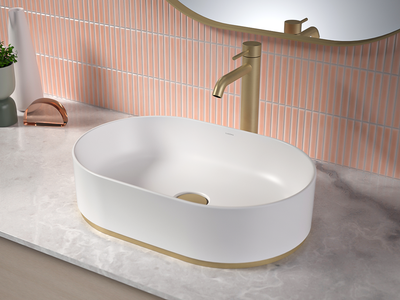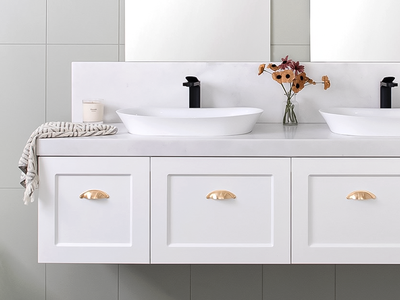The Renovator’s Guide to the Best Bathtubs (2025)
A well-chosen bathtub elevates your bathroom from functional to indulgent.
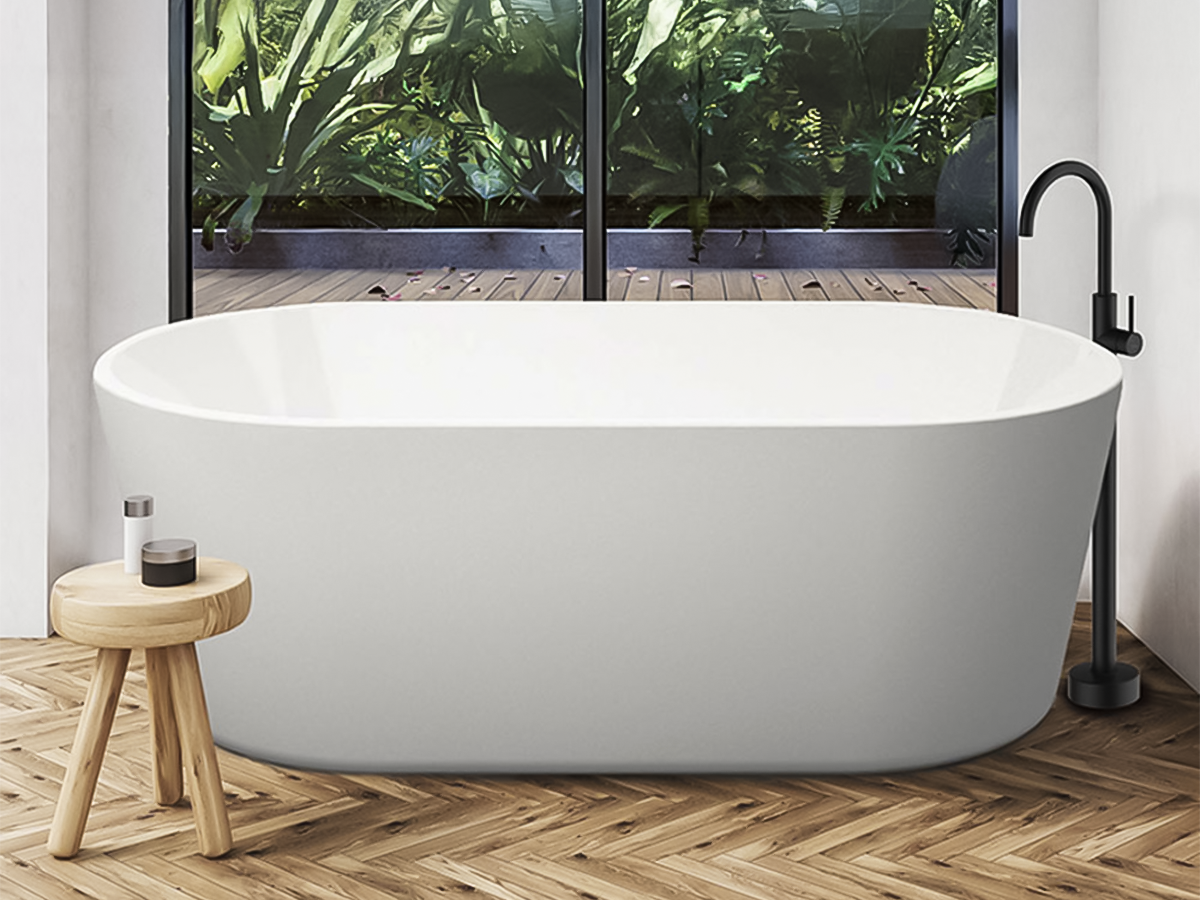
This guide offers practical insights, side-by-side comparisons, and expert-backed recommendations to help you choose a bathtub that fits your space, suits your lifestyle, and enhances the overall design of your bathroom.
Learn how size, material, and installation type can shape comfort, layout and long-term usability.
How Much Should You Budget for a Bathtub?
Plan to allocate around 10-20% of your total bathroom renovation budget for the bathtub, including the tub itself, plumbing, and installation.
This allows you to balance design impact, comfort, and performance, especially if your tub is a focal point in the room.
Freestanding baths offer sculptural impact and layout flexibility but typically cost more to install and require more open floor space. Inset baths are more budget-friendly, efficient with space, and easier to clean around, making them a practical choice for family bathrooms or smaller layouts.
💎 Buildmat Pro Bathtub Budgeting Tip
Lock in your bathtub choice early so plumbing rough-ins, hob heights, and floor structure are built to suit. Changing course late can add serious cost, as your bathtub can affect drainage, wall tiling, tap placement, and access.
What Size Bathtub Works Best for Your Bathroom Layout?
The best bathtub size depends on your available floor space, how the bath will be used, and who it’s designed for.
A 1500mm bath suits compact bathrooms and single users, while 1700mm is the most common size for standard family homes. For spacious layouts or luxury ensuites, 1800mm+ baths offer generous soaking depth and more room to recline, especially for couples or taller users.
Width and depth matter too. A wider tub (750-800mm) gives you more shoulder room, while a deeper one allows for full immersion without taking up extra floor space.
Before locking in a size, map out your clearances: allow at least 700mm in front of the bath for easy access, and check door swings and nearby fixtures.
Small Bathtubs (1400–1500mm)
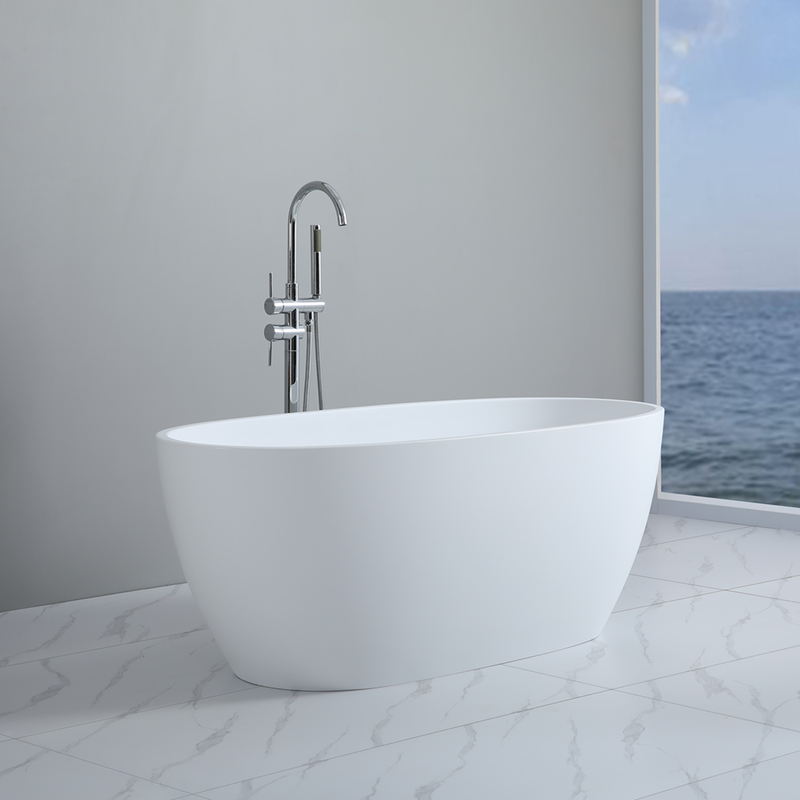
WHY SMALL BATHTUBS WORK BEST IN COMPACT BATHROOMS AND ENSUITES
Small bathtubs offer a space-saving solution without sacrificing the comfort of a soak. They’re ideal for apartments, powder rooms, or tight renovations where full-size tubs won’t fit, but you still want the functionality of a bath.
Despite their compact footprint, many small tubs feature ergonomic shaping or deeper profiles to allow full-body immersion in a shorter length. Some styles also double as a shower bath, making them a clever fit for dual-purpose spaces.
WHAT TO CONSIDER BEFORE CHOOSING A SMALL BATHTUB
Small tubs can feel cramped for taller adults or shared bathing, so consider who will be using it and how often. A more upright design helps offset the shorter length, but you may need to compromise on reclining space or leg stretch.
If the tub is also your shower base, check whether the internal width allows enough standing room. Aim for a design with steep sides and flat bases for safer, more usable showering.
Standard Bathtubs (1500–1700mm)
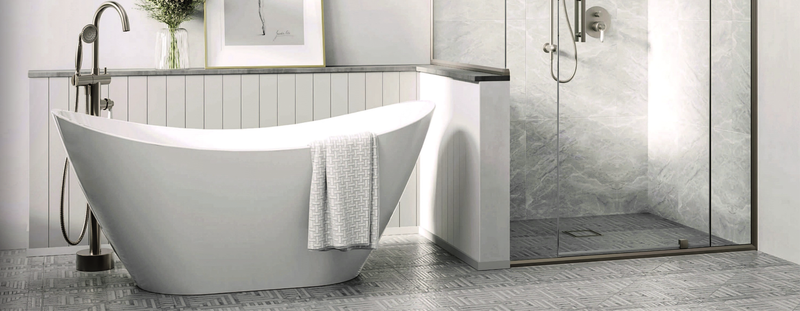
WHY STANDARD BATHTUBS SUIT MOST BATHROOM LAYOUTS
Standard bathtubs strike the best balance for family bathrooms, offering enough room for relaxing baths without taking over the entire floor plan. Most new builds and renovations are designed to accommodate this size.
They’re widely available in both inset and freestanding options, and compatible with shower-over-bath setups, making them a smart, flexible pick for busy households.
WHAT TO CONSIDER BEFORE CHOOSING A STANDARD BATHTUB
Measure your available wall-to-wall space, as some layouts may require a custom trim kit or small gap-filling solution for a perfect fit. If you’re combining it with a shower, look for anti-slip surfaces, a central waste position, and a model with squared-off ends to maximise standing room.
For daily bathing, consider insulation performance and how easily the tub retains heat.
Large Bathtubs (1800mm+)
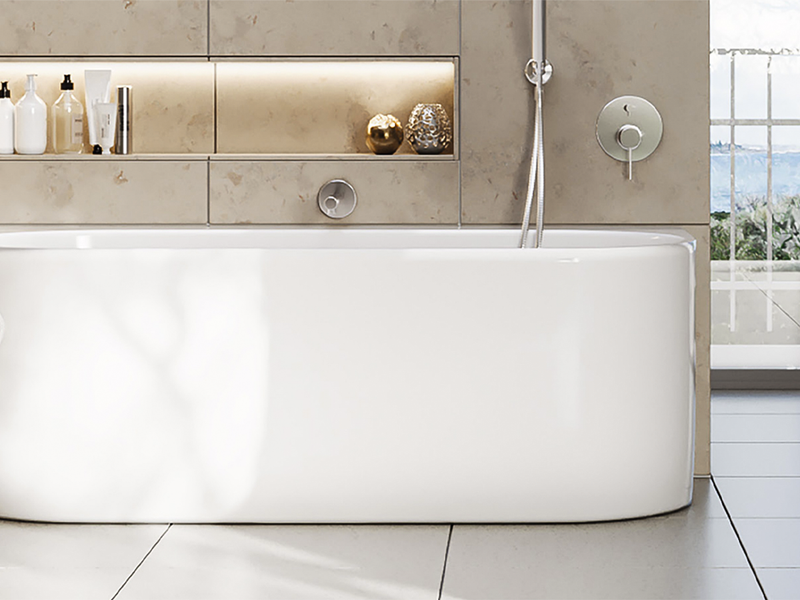
WHY LARGE BATHTUBS DELIVER A LUXURY, SPA-LIKE EXPERIENCE AT HOME
Large bathtubs are ideal for master ensuites or luxury renovations where comfort and visual impact are the priority. Their generous length allows full stretch-out soaking, shared use, or deep immersion: perfect for unwinding at the end of the day.
Freestanding styles in this size can become a design centrepiece, especially when paired with statement tapware or views.
WHAT TO CONSIDER BEFORE CHOOSING A LARGE BATHTUB
Make sure your floor plan can accommodate the extra length without crowding vanities or reducing walkway clearance. Larger tubs also hold more water, which can increase fill times and place extra demand on hot water systems, so check capacity ratings before buying.
Due to their size and weight (especially when filled), freestanding baths may need extra floor reinforcement, particularly on upper levels. Always consult your builder or plumber early in the process.
How Bathtub Installation Style Affects Space, Cleaning, and Visual Impact
The right bathtub installation style should work with your floor plan, not fight it.
It shapes how easily you clean, move through the space, and what’s possible during installation, especially if plumbing or walls are already fixed.
Built-in and back-to-wall bathtubs are practical for compact or family bathrooms where every centimetre counts. They minimise gaps and create a neat, low-maintenance finish. In contrast, freestanding or clawfoot tubs are better suited to larger layouts or design-led renovations where the bath becomes a visual centrepiece.
Also consider how much wall support you need for tapware, shelving, or splashback protection. Fully freestanding baths need space around them and a freestanding mixer or floor plumbing. Back-to-wall and corner styles simplify this by sitting flush and using standard wall fixtures.
💎 Buildmat Pro Installation Tip
Choose your bath type early so it aligns with your floor waste position, waterproofing, and tiling plans. Inset and back-to-wall options are easiest to clean and retrofit, while freestanding baths are a design feature that requires more room and planning.
Inset or Built-in Bathtubs
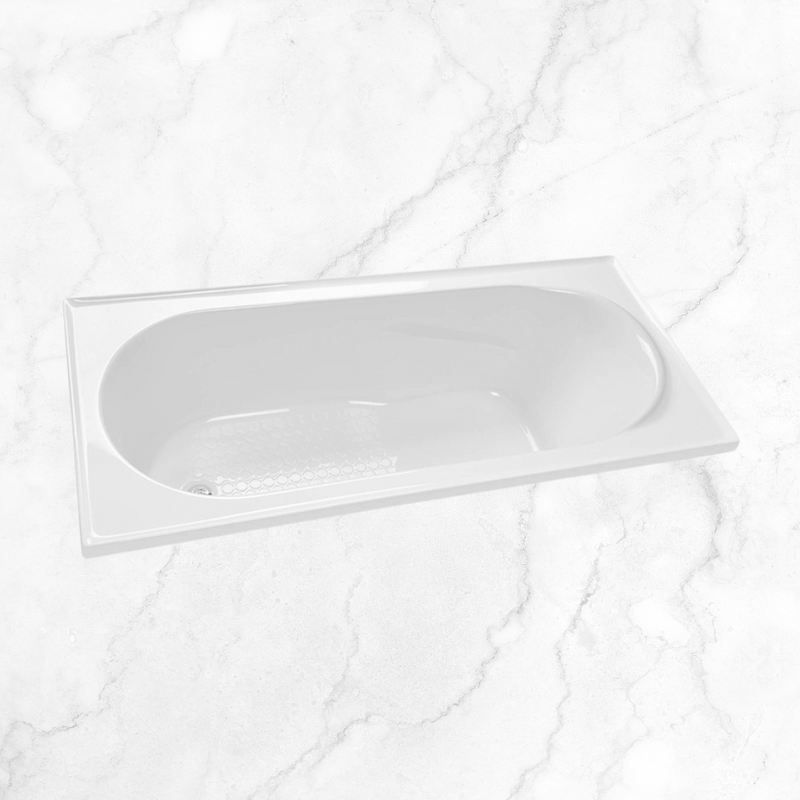
WHY INSET BATHTUBS OFFER THE MOST PRACTICAL AND SPACE-SAVING OPTION
Inset bathtubs (also known as built-in or drop-in bathtubs) are built into a tiled surround (or hob), making them ideal for compact layouts or family bathrooms where splash control, safety, and ease of cleaning matter. They sit flush against walls, offering efficient use of space and an integrated, streamlined look.
They’re framed by walls or tiles on at least one side, which helps prevent water spillage and are easier for kids and older adults to get in and out of. They're a smart, functional option when storage, splash zones, and layout efficiency take priority.
WHAT TO CONSIDER BEFORE CHOOSING AN INSET BATHTUB
Inset tubs require custom tiling and framing, so they’re best suited to renovations where you’re already redoing the wet area. They need careful waterproofing and correct fall in the hob to ensure drainage.
Because access panels are often tiled over, future maintenance (like fixing a leaking waste) may involve removing sections of the surround. Factor in tile lead times and extra install labour when budgeting.
Freestanding Bathtubs
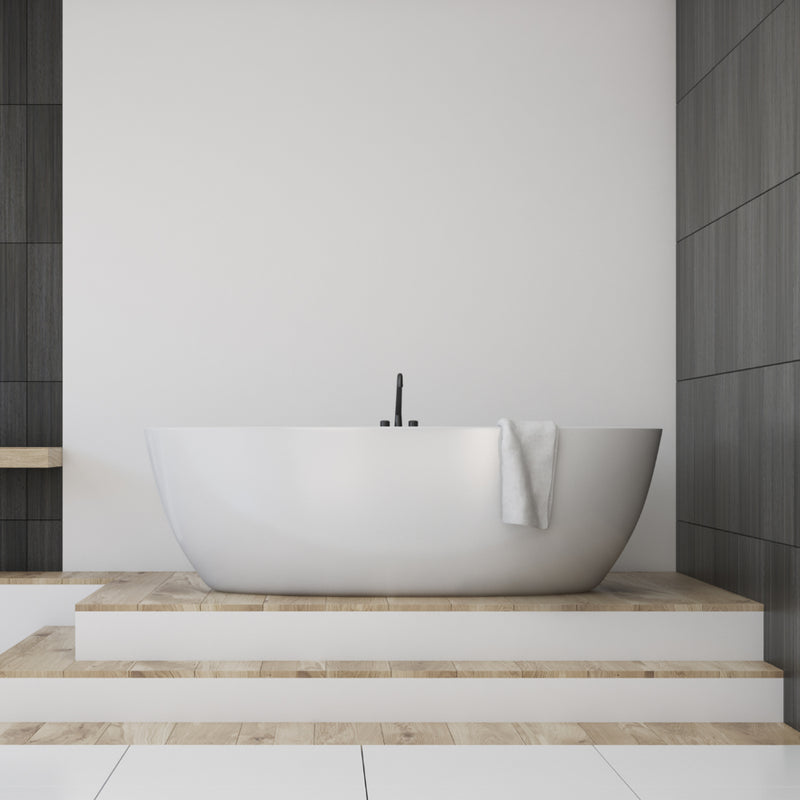
WHY FREESTANDING BATHTUBS CREATE MAXIMUM IMPACT AND LUXURIOUS AMBIENCE
Freestanding bathtubs (also known as island bathtubs) stand alone and demand attention, making them ideal for creating spa-like, magazine-worthy bathrooms. With sculptural curves and full surround access, they elevate any space with their sculptural presence.
They’re great for layouts where the bath isn’t boxed into a corner, giving you design freedom and a clean, high-end feel in open ensuites or luxe master bathrooms.
WHAT TO CONSIDER BEFORE CHOOSING A FREESTANDING BATHTUB
Freestanding tubs need space to breathe visually and physically. Cleaning around and behind the tub can be fiddly, and you’ll need to factor in floor plumbing and freestanding tapware (often at higher cost).
Make sure your floor can support the full tub weight when filled with water and a person. They’re not ideal for splash-prone family baths or tight bathrooms where edges would be hard to access or clean.
Back-to-Wall Bathtubs
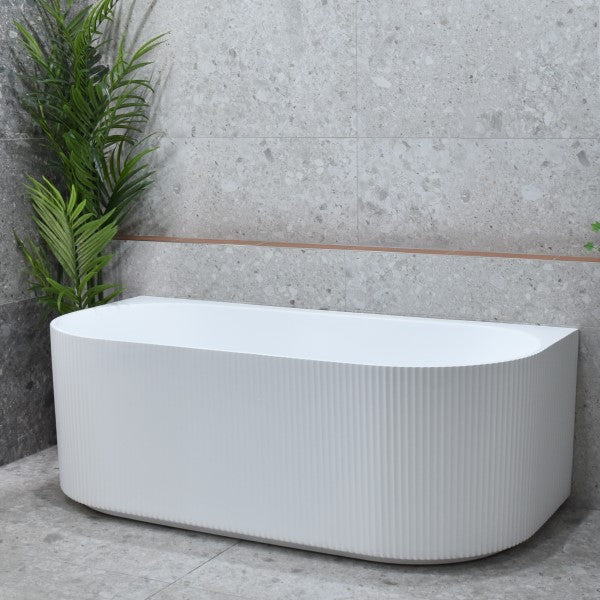
WHY BACK-TO-WALL BATHTUBS BALANCE MODERN STYLE AND PRACTICAL FIT
Back-to-wall bathtubs give you the look of a freestanding tub with the easy cleaning and space efficiency of a built-in. One flat edge sits flush to the wall, hiding plumbing and preventing water from pooling behind the bath.
They’re perfect for renovators who want a statement look without needing full floor clearance around the bath.
WHAT TO CONSIDER BEFORE CHOOSING A BACK-TO-WALL BATHTUB
These baths still need enough space on the remaining sides for installation and access. Because they butt directly up to the wall, that surface needs to be flat, plumb, and properly sealed.
They’re simpler to plumb than a full freestanding tub but still require enough space for comfortable access around the sides and front. Ensure the wall can support wall-mounted tapware if you’re not installing a freestanding mixer.
Corner Bathtubs
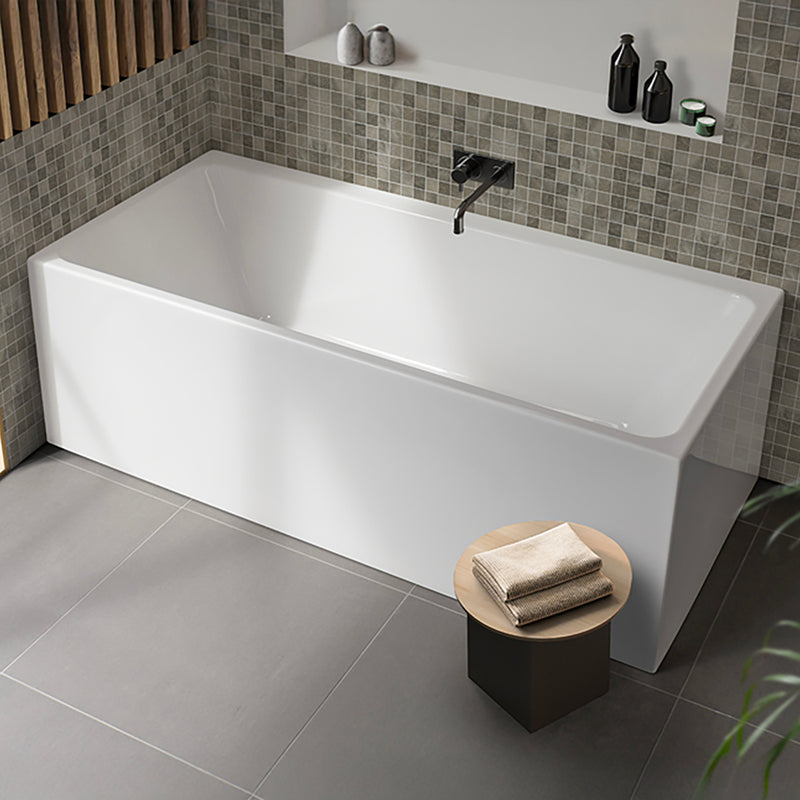
WHY CORNER BATHTUBS OPTIMISE AWKWARD LAYOUTS AND SMALL BATHROOMS
Corner bathtubs tuck neatly into unused spaces, making them ideal for awkward layouts, small ensuites, or family bathrooms where you need to maximise floor area. They often feel deeper than they are wide, which suits soaking or shared bath time with kids.
Their asymmetric shape can open up more walking space while still offering a generous internal volume.
WHAT TO CONSIDER BEFORE CHOOSING A CORNER BATHTUB
Corner tubs can feel bulky if placed in a room with already limited width. Their curves or angles can also clash with clean, modern lines, so consider how the shape fits your overall aesthetic.
Their irregular shape can mean custom tile work or wall niches are needed to make the surrounding area practical and polished. They’re less common in minimal or architectural styles but great for transitional or family-friendly bathrooms.
How to Choose the Right Bathtub Material for Your Bathroom
The best bathtub material balances comfort, durability, and maintenance to suit how you actually use your bathroom.
It influences everything from how warm the bath feels to how easily it scratches or stains over time.
Acrylic is lightweight, warm to the touch, and easy to install, which works well for families, upstairs bathrooms, or daily use. Stone composite or solid surface options offer a luxurious, sculptural finish with better heat retention but require more budget and structural support.
Enamelled steel and cast iron are ultra-durable and classic in look, but heavier, colder, and prone to chipping if not handled with care. Think about who’s using the bath, how often, and whether you want something that looks premium, feels warm, or stays low maintenance.
Acrylic Bathtubs
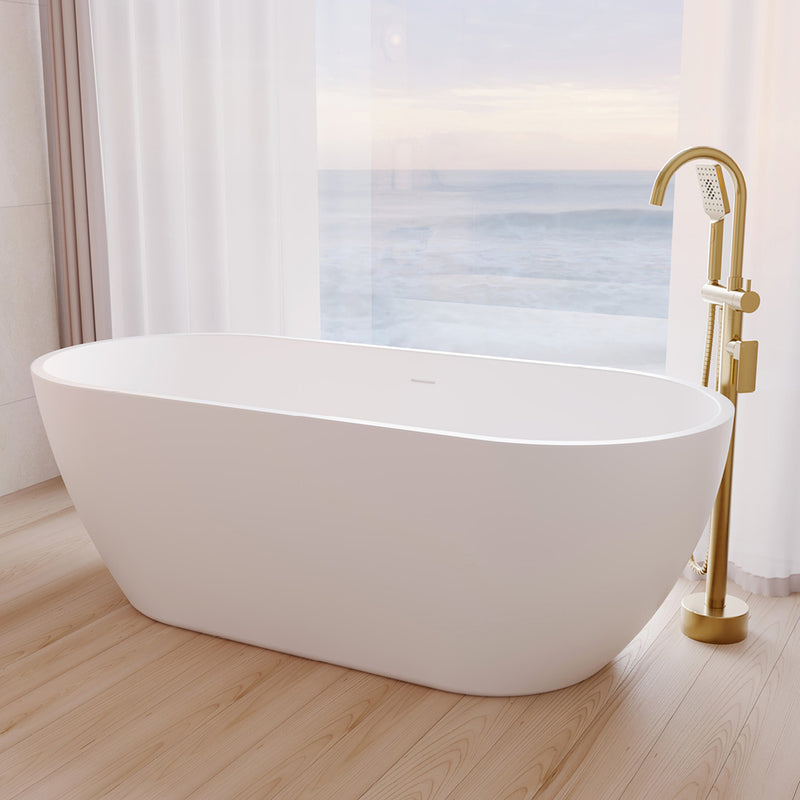
WHY ACRYLIC BATHTUBS OFFER EVERYDAY COMFORT WITHOUT THE MAINTENANCE HEADACHE
Acrylic is the most common bathtub material, known for being lightweight, affordable, and comfortable. Warm to the touch and smooth underfoot, acrylic bathtubs hold heat reasonably well and are forgiving on bumps and knocks, making it ideal for family bathrooms or regular use.
Acrylic is easy to mould, so find a wide range of shapes and styles: from classic rectangular bathtubs to fluted bathtub designs. Its non-porous finish also makes it quick to clean and resistant to mould and mildew. Most commonly, a classic white bathtub.
WHAT TO CONSIDER BEFORE CHOOSING AN ACRYLIC BATHTUB
While acrylic is durable, it’s more prone to scratching and discolouration than solid surface or stone alternatives, so avoid abrasive cleaners or scouring pads. Over time, cheaper models can flex slightly if not properly installed or reinforced.
If you’re looking for a more design-led or architectural finish, acrylic may not deliver the same premium feel as heavier materials. But for most renovations, it offers the best balance of cost, comfort and ease of installation.
Solid Surface Bathtubs
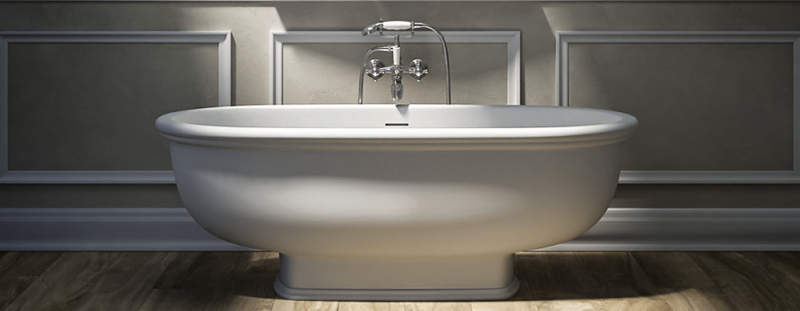
WHY SOLID SURFACE BATHTUBS COMBINE MODERN DESIGN WITH LUXURY
Solid surface bathtubs (also known as stone bathtubs) are the sweet spot between sculptural design and functional performance. Made from a blend of resins and natural minerals, they offer a matte, seamless look that feels silky to the touch and retains heat well, perfect for long soaks. Available in white and black bathtubs.
Their weight gives a more substantial, premium feel without the full heft of natural stone. Light scratches can often be buffed out, helping the tub retain its pristine look over time.
WHAT TO CONSIDER BEFORE CHOOSING A SOLID SURFACE BATHTUB
Solid surface is heavier than acrylic, so you’ll need to confirm your bathroom floor can support the weight, especially in upstairs installs. These tubs also carry a higher price point, reflective of their build quality and refined aesthetics.
Installation can require more than one person due to the weight, and care should be taken with matte finishes to prevent product buildup. Opt for pH-neutral cleaners and avoid oil-heavy bath additives, which can dull the surface over time.
Must-Have Accessories to Complement Your Bathtub
The right accessories can elevate your bath from a basic fixture to a daily retreat. They enhance comfort, safety, and visual cohesion.
Start with a sleek bath spout or mixer to match your bath tapware finish to other bathroom fixtures. Add a bath caddy or tray for easy access to books, candles, or self-care essentials. If you're designing with accessibility in mind, consider non-slip mats or integrated grab rails to make entry and exit safer, without compromising style.
Buildmat’s curated bathtub accessories are chosen to complement a wide range of materials and layouts, helping you personalise your space while improving long-term usability.
Browse Buildmat’s Curated Bathtub Accessory Range
How to Clean and Maintain Your Bathtub
Proper care keeps your bathtub clean, inviting, and free from damage. Regular maintenance helps prevent staining, limescale buildup, and wear, no matter what material your bath is made from.
Daily Cleaning
Rinse your bathtub after each use to wash away soap residue, oils, and hair. Use a soft sponge or microfiber cloth with warm water and a pH-neutral cleaner to wipe down the surface. For textured or matte finishes, avoid scrubbing too hard. Gentle pressure is enough to keep it looking fresh.
Deep Cleaning
Once a week, give the tub a full clean. Apply a cream cleanser or non-abrasive bathroom cleaner, focusing on the base, inner walls, and around the waste outlet. For freestanding or island baths, don’t forget to clean behind and around the exterior base where dust can collect. If you have a solid surface or stone bath, follow the manufacturer’s instructions to avoid surface etching.
Remove mineral rings or build-up with a mild vinegar solution or purpose-made descaler, but skip the vinegar on natural stone or stainless finishes.
Avoid Harsh Chemicals
Bleach, ammonia, and abrasive powders can damage enamel, acrylic, or solid surface coatings. Avoid steel wool or scouring pads, which may scratch or dull the finish, especially on coloured or black bathtubs. Stick to soft cloths and non-acidic products specifically labelled safe for bathtubs.
Routine Checks
Each month, check the waste outlet, overflow, and any silicone seals for signs of mould, cracking, or lifting. Ensure your bath is properly supported (especially freestanding models) and that any wall-mounted tapware is sealed and watertight. In tiled or hob-set baths, inspect the grout and caulking for gaps that could lead to water damage.
Protection Accessories
A bath tray or caddy can reduce surface wear and keep products organised. Non-slip mats or adhesive grip strips improve safety in family bathrooms. For freestanding baths, consider a floor-mounted tap protector or stabilising collar to keep fixtures secure and looking tidy.
Your perfect bathroom starts with the right tub.
Choosing the right bathtub means balancing size, material, and installation style with how you like to relax and use the space. Whether you’re after a compact built-in or a freestanding showpiece, the right bath can anchor your layout and elevate everyday comfort.
Still weighing up the options? Browse Buildmat’s full bathtub collection to compare styles, sizes, and finishes or chat with our team for expert, layout-specific advice.
Frequently Asked Questions
FAQs
It refers to the position of the waste and overflow when looking at the bath from the front. Choose the orientation that matches your bathroom’s plumbing or desired layout to avoid costly modifications.
Not always, but it’s recommended for stability and to prevent water or grime from collecting underneath. Check your installer’s advice based on your flooring type and bath weight.
Not all bathtubs are designed for shower use. Look for flat-base, built-in or back-to-wall styles with straight sides and anti-slip surfaces. Avoid freestanding or curved designs unless they’re rated for dual use.
Stone and solid surface baths can be extremely heavy, especially once filled. Always check your floor’s weight rating (especially in upstairs bathrooms) and consider reinforcing if needed.
Opt for slip-resistant bases, rounded edges, and install a temperature-limiting mixer to prevent scalding. A low-profile built-in bath with a step or hob can also help younger children climb in safely.
Ensure the floor is level, reinforced for weight, and well-sealed against moisture. Freestanding tubs often require careful waterproofing and a suitable waste outlet position to avoid floor damage.





























































































































































































































